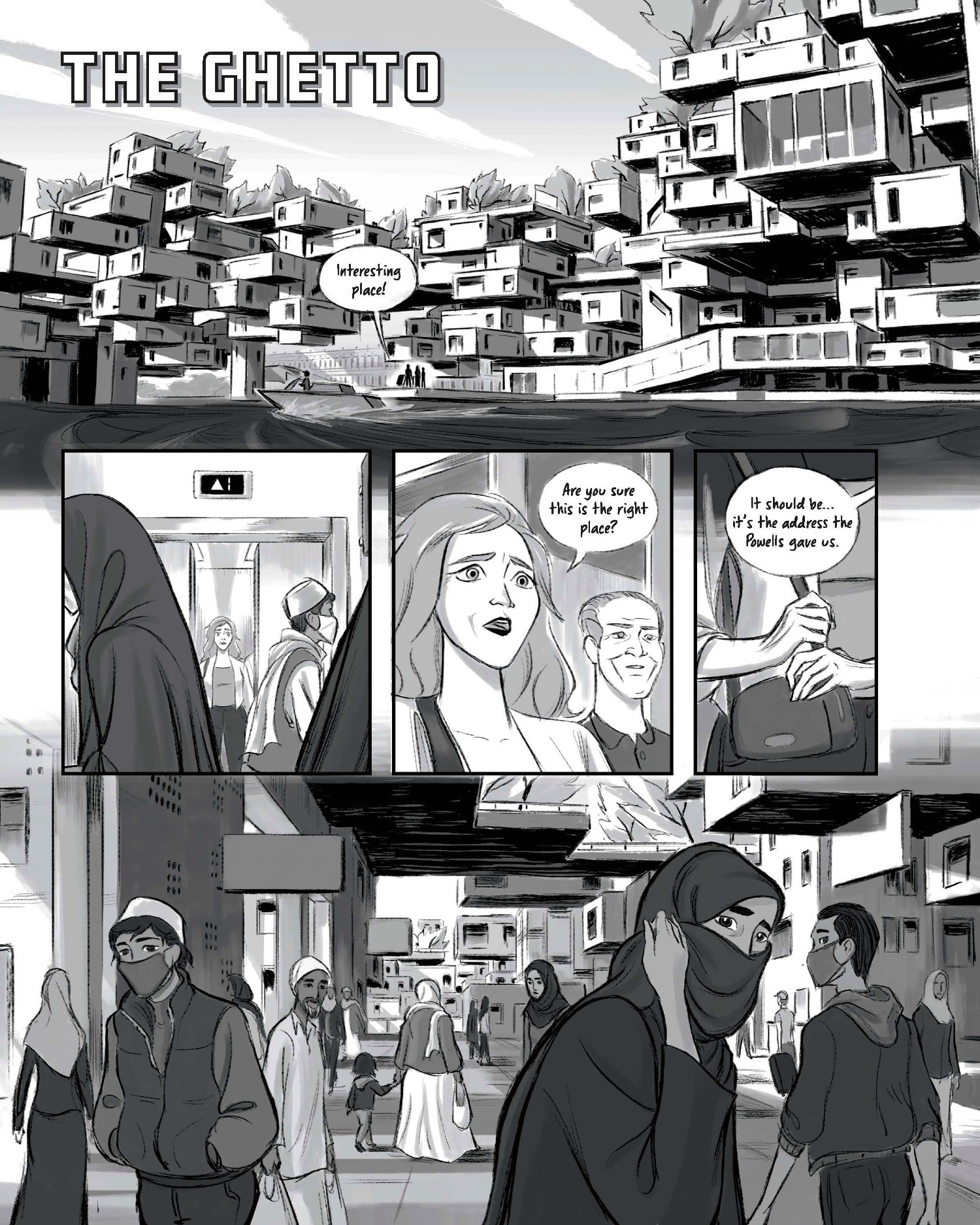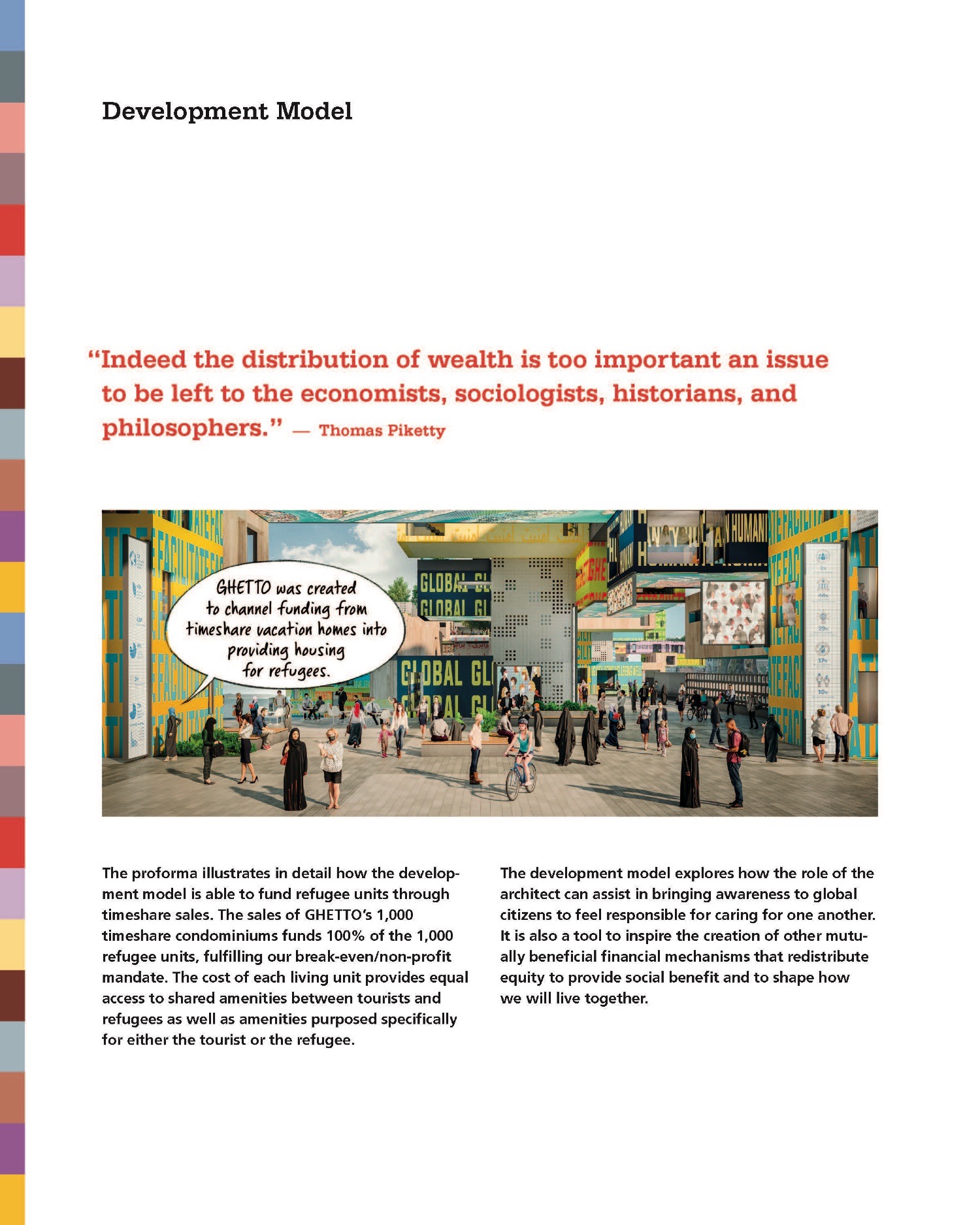Book Review: GHETTO
“In this theoretical development model for Venice, the city’s historical saturation of tourists is leveraged as an economic opportunity to house refugees in need,” writes Gregory Henriquez.
 By Henriquez Partners Architects and Wei Li (Blue Imprint, 2021).
By Henriquez Partners Architects and Wei Li (Blue Imprint, 2021).
Henriquez Partners Architects was one of several architects invited to exhibit their work in Time Space Existence, an offsite exhibition organized by the European Cultural Centre for the Venice Biennale. Instead of showing built work, they took the opportunity to propose a speculative project—a series of Habitat-like developments that would be positioned in various places in Venice, split between time-share vacation units and refugee housing.
 This graphic novel presents the proposal in a compelling set of parallel narratives. “For Sale” follows a vacationing family, at first skeptical and uncomfortable staying alongside refugees at GHETTO. Gradually, they connect to their new neighbours—and even become inspired by their experiences and courage. “Sanctuary” tells the story of a refugee family arriving to GHETTO for the first time, after a harrowing sea journey. The development’s social supports—and even the sometimes awkward presence of tourists—helps them to adapt to their new lives and contend with the trauma of their displacement.
This graphic novel presents the proposal in a compelling set of parallel narratives. “For Sale” follows a vacationing family, at first skeptical and uncomfortable staying alongside refugees at GHETTO. Gradually, they connect to their new neighbours—and even become inspired by their experiences and courage. “Sanctuary” tells the story of a refugee family arriving to GHETTO for the first time, after a harrowing sea journey. The development’s social supports—and even the sometimes awkward presence of tourists—helps them to adapt to their new lives and contend with the trauma of their displacement.
 A third section of the book uses the graphics of sales brochures to present the development, complete with floor plans and a financial pro forma, inviting readers to suspend their disbelief in the radical proposal. The authors take Alberto Pérez-Gómez’s challenge to heart, which they quote in the book: “To take a leading role in contemporary issues, the architect of the 21st century must be a social activist, a realist, a poet, a political technician, and a utopian.”
A third section of the book uses the graphics of sales brochures to present the development, complete with floor plans and a financial pro forma, inviting readers to suspend their disbelief in the radical proposal. The authors take Alberto Pérez-Gómez’s challenge to heart, which they quote in the book: “To take a leading role in contemporary issues, the architect of the 21st century must be a social activist, a realist, a poet, a political technician, and a utopian.”
 “In this theoretical development model for Venice, the city’s historical saturation of tourists is leveraged as an economic opportunity to house refugees in need,” writes principal Gregory Henriquez. “Our project’s intention is to encourage a meaningful dialogue about the relationship between citizens and cities in a global context. What does it mean to be a ‘citizen’? What is a city’s inherent accountability to an individual’s humanity? What is the role of the architect in building an inclusive city?”
“In this theoretical development model for Venice, the city’s historical saturation of tourists is leveraged as an economic opportunity to house refugees in need,” writes principal Gregory Henriquez. “Our project’s intention is to encourage a meaningful dialogue about the relationship between citizens and cities in a global context. What does it mean to be a ‘citizen’? What is a city’s inherent accountability to an individual’s humanity? What is the role of the architect in building an inclusive city?”
